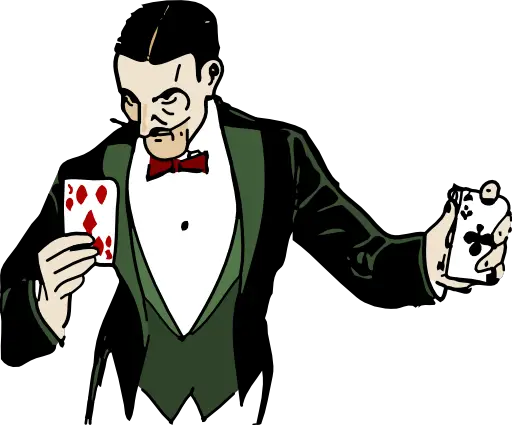Support our educational content for free when you purchase through links on our site. Learn more
Mentalism Examples: Unveiling the Secrets of the Mind [2024] 🎩
Have you ever been amazed by a magician who seemed to know your thoughts before you even spoke them? Or witnessed someone seemingly bend spoons with their mind? These mind-boggling feats are examples of mentalism, an art form that combines psychology, intuition, and showmanship to create astonishing experiences. In this comprehensive guide, we will delve into the world of mentalism, exploring its history, techniques, and mind-blowing examples. Get ready to unlock the secrets of the mind and discover the fascinating world of mentalism!
Table of Contents
- Quick Answer
- Quick Tips and Facts
- Background: The Art of Mentalism
- Understanding Mentalism: Beyond Magic
- Examples of Mind-Bending Mentalism
- The Power of Suggestion: Hypnosis in Mentalism
- Reading Minds: Telepathy and Mind-Reading
- Body Language: The Silent Language of Mentalism
- Detecting Deception: Lie Detection in Mentalism
- Beyond the Physical: Remote Viewing and Clairvoyance
- The Power of the Mind: Psychokinesis in Mentalism
- Spiritualism and Mentalism: Exploring the Otherworldly
- FAQ
- Conclusion
- Recommended Links
- Reference Links
Quick Answer
Mentalism is an intriguing art form that combines psychology, intuition, and showmanship to create mind-bending experiences. Mentalists use techniques such as telepathy, mind-reading, body language reading, lie detection, remote viewing, clairvoyance, hypnosis, psychokinesis, and spiritualism to captivate and astonish their audiences. Whether it’s predicting thoughts, bending objects with the mind, or uncovering hidden truths, mentalism offers a unique and unforgettable form of entertainment.
🔍 Quick Tips and Facts:
- Mentalism is an art form that focuses on the mind and imagination, rather than props or sleight of hand.
- Mentalists use a combination of psychology, intuition, and showmanship to create mind-bending experiences.
- Common examples of mentalism include telepathy, mind-reading, body language reading, lie detection, remote viewing, clairvoyance, hypnosis, psychokinesis, and spiritualism.
- Mentalism originated in the 1800s as a response to public fascination with spiritualism and psychic research.
- Mentalism shows can be performed in-person or virtually, offering unique and captivating experiences for events.
Now, let’s dive deeper into the world of mentalism and explore its fascinating history, techniques, and mind-blowing examples!
Background: The Art of Mentalism
Mentalism is an art form that has captivated audiences for centuries. It originated in the 1800s as a response to the public’s fascination with spiritualism and psychic research. During this time, mediums claimed to communicate with the spirits of the deceased, leading to a surge in interest in the supernatural. Mentalists emerged as entertainers who could replicate these extraordinary abilities through psychological techniques and showmanship.
The art of mentalism revolves around the power of the mind and the ability to influence and manipulate thoughts, perceptions, and behaviors. Mentalists combine psychology, intuition, and observation to create mind-bending experiences that leave audiences questioning what is possible. They tap into the mysteries of the human mind, exploring its depths and pushing the boundaries of what we believe to be true.
Understanding Mentalism: Beyond Magic
While mentalism shares similarities with magic, it is a distinct art form that focuses on the mind and imagination rather than props or sleight of hand. Mentalists use a combination of psychological techniques, observation skills, and showmanship to create the illusion of extraordinary mental abilities. They astound audiences by seemingly reading minds, predicting thoughts, and influencing behavior.
Mentalism is not about claiming supernatural powers or actual mind-reading. Instead, it is about creating an immersive experience that blurs the line between reality and illusion. Mentalists use a variety of techniques, including cold reading, hot reading, suggestion, and misdirection, to create the illusion of mind-reading and other extraordinary abilities.
Examples of Mind-Bending Mentalism
Mentalism offers a wide range of mind-bending examples that showcase the power of the human mind. Let’s explore some of the most captivating and astonishing examples of mentalism:
The Power of Suggestion: Hypnosis in Mentalism
Hypnosis is a powerful tool used by mentalists to create extraordinary experiences. Through the power of suggestion, mentalists can guide individuals into a state of heightened focus and suggestibility. This allows them to influence thoughts, perceptions, and behaviors, creating seemingly impossible feats.
One popular example of hypnosis in mentalism is the ability to make someone forget a specific word or number. The mentalist suggests that the word or number has vanished from the participant’s mind, and to their amazement, it has indeed disappeared. This showcases the power of suggestion and the influence the mind has over our perceptions.
Reading Minds: Telepathy and Mind-Reading
One of the most captivating aspects of mentalism is the ability to seemingly read minds. Mentalists use a combination of psychological techniques, observation skills, and showmanship to create the illusion of mind-reading.
In a classic mind-reading routine, a mentalist asks a participant to think of a word, number, or image. Through a series of questions, observations, and psychological techniques, the mentalist is able to reveal the exact word, number, or image the participant is thinking of. This leaves the audience astounded and questioning the limits of the human mind.
Body Language: The Silent Language of Mentalism
Body language plays a crucial role in mentalism, as it provides valuable cues and insights into a person’s thoughts and emotions. Mentalists are skilled at reading and interpreting body language, allowing them to uncover hidden truths and make astonishing predictions.
In a body language reading routine, a mentalist observes a participant’s nonverbal cues, such as facial expressions, gestures, and posture. Based on these observations, the mentalist can make accurate assessments about the participant’s thoughts, emotions, and even past experiences. This showcases the power of observation and the silent language of the body.
Detecting Deception: Lie Detection in Mentalism
Lie detection is another fascinating aspect of mentalism. Mentalists are skilled at detecting subtle signs of deception and uncovering hidden truths. Through a combination of observation, psychological techniques, and intuition, they can determine when someone is lying or telling the truth.
In a lie detection routine, a mentalist engages in a conversation with a participant and asks a series of questions. Through careful observation of verbal and nonverbal cues, the mentalist can identify signs of deception, such as changes in tone of voice, body language inconsistencies, or microexpressions. This showcases the power of observation and the ability to uncover hidden truths.
Beyond the Physical: Remote Viewing and Clairvoyance
Remote viewing and clairvoyance are examples of mentalism that go beyond the physical realm. These abilities involve perceiving or accessing information about distant or unseen objects, people, or events.
In a remote viewing routine, a mentalist claims to be able to see or describe a location or object that is hidden or far away. Through a combination of intuition, visualization techniques, and showmanship, the mentalist creates the illusion of accessing information beyond the limits of the physical senses.
Clairvoyance, on the other hand, involves the ability to perceive information about past, present, or future events through extrasensory perception. Mentalists use a combination of psychological techniques, intuition, and showmanship to create the illusion of clairvoyance, leaving audiences amazed and questioning the boundaries of what is possible.
The Power of the Mind: Psychokinesis in Mentalism
Psychokinesis, also known as telekinesis, is the ability to move or manipulate objects with the power of the mind. While psychokinesis is often associated with supernatural abilities, mentalists create the illusion of psychokinesis through a combination of psychological techniques and showmanship.
In a psychokinesis routine, a mentalist claims to be able to bend spoons, move objects, or influence the behavior of physical objects using only the power of their mind. Through misdirection, sleight of hand, and psychological techniques, the mentalist creates the illusion of extraordinary mental abilities, leaving audiences in awe.
Spiritualism and Mentalism: Exploring the Otherworldly
Spiritualism has played a significant role in the history of mentalism. During the 1800s, when spiritualism was at its peak, mentalists emerged as entertainers who could replicate the abilities claimed by mediums and spiritualists.
Mentalists use a combination of psychological techniques, showmanship, and storytelling to create the illusion of communicating with spirits or accessing otherworldly information. Through séances, mediumship demonstrations, and psychic readings, mentalists create a captivating and immersive experience that blurs the line between the physical and the spiritual.
FAQ
What is a real-life example of mentalism?
A real-life example of mentalism is when a mentalist accurately predicts a word, number, or image that a participant is thinking of. Through a combination of psychological techniques, observation skills, and showmanship, the mentalist creates the illusion of mind-reading and leaves the audience astounded.
What is the technique of mentalism?
The technique of mentalism involves a combination of psychological techniques, observation skills, and showmanship. Mentalists use techniques such as cold reading, hot reading, suggestion, misdirection, and body language reading to create mind-bending experiences and illusions.
Read more about “What is the technique of mentalism?”
What is mentalism behavior?
Mentalism behavior refers to the actions and techniques used by mentalists to create the illusion of extraordinary mental abilities. This includes techniques such as mind-reading, telepathy, body language reading, lie detection, remote viewing, clairvoyance, hypnosis, psychokinesis, and spiritualism.
Read more about “Mentalism in Psychology: Mastering the Art of Mind Reading …”
How to practice mentalism?
Practicing mentalism requires a combination of study, practice, and performance. Here are some steps to get started:
- Study the techniques and principles of mentalism through books, online resources, and courses.
- Practice psychological techniques, observation skills, and showmanship to enhance your abilities.
- Perform mentalism routines for friends, family, or small audiences to gain experience and refine your skills.
- Seek feedback and learn from other mentalists to continually improve your performance.
Read more about “Learn Mind Reading and Mentalism: Unlock the Secrets of the Mind! … 🧠✨”
Conclusion
Mentalism is a captivating art form that combines psychology, intuition, and showmanship to create mind-bending experiences. From mind-reading and telepathy to hypnosis and psychokinesis, mentalism offers a unique and unforgettable form of entertainment. Whether you’re amazed by the power of suggestion or fascinated by the silent language of body, mentalism has something to captivate and astonish everyone. So, embrace the mysteries of the mind and explore the fascinating world of mentalism!
Remember, the true magic lies within the power of your own mind. Keep exploring, learning, and pushing the boundaries of what you believe to be possible. The world of mentalism is just the beginning of a journey into the extraordinary!







